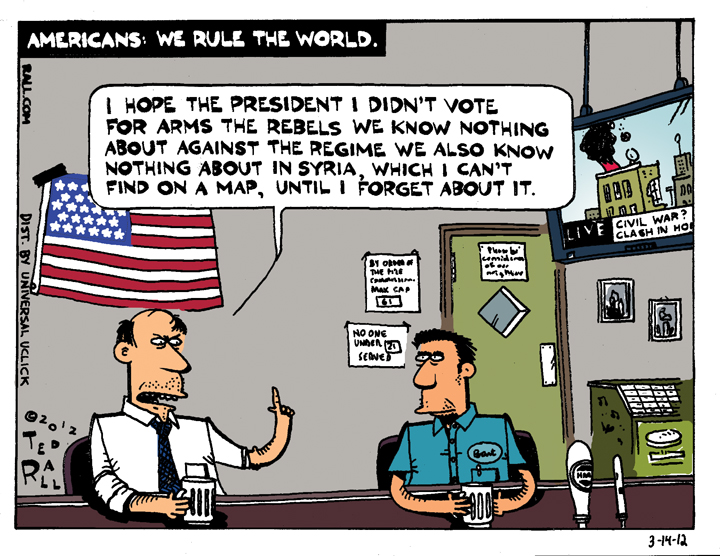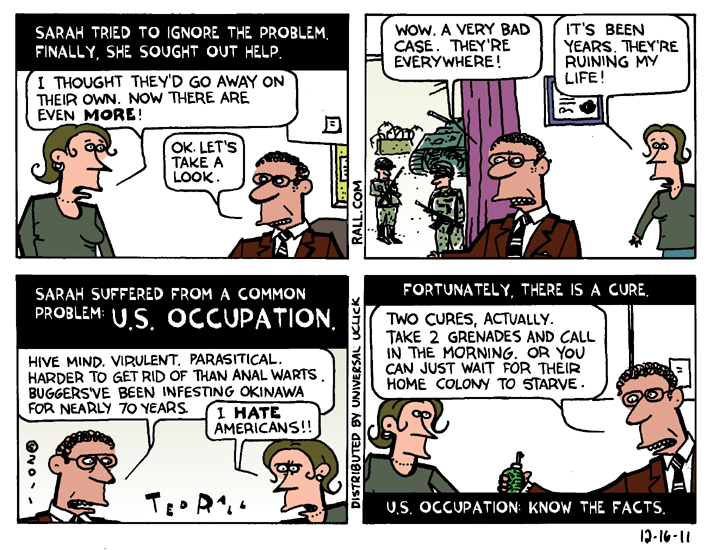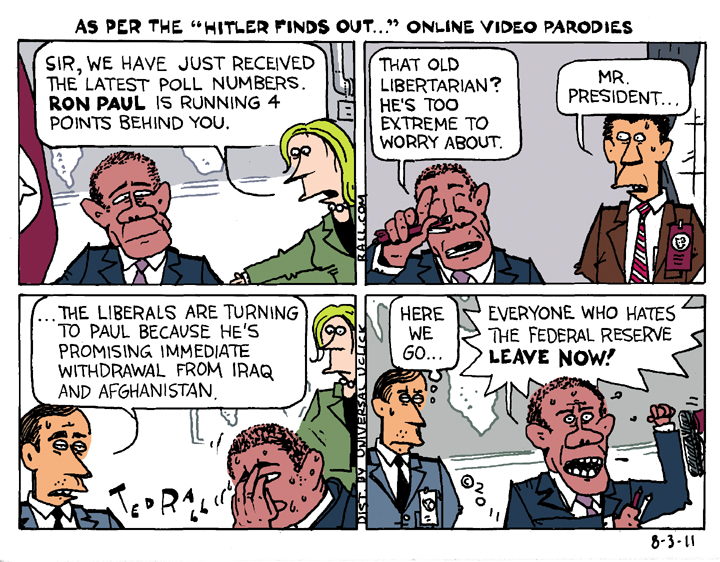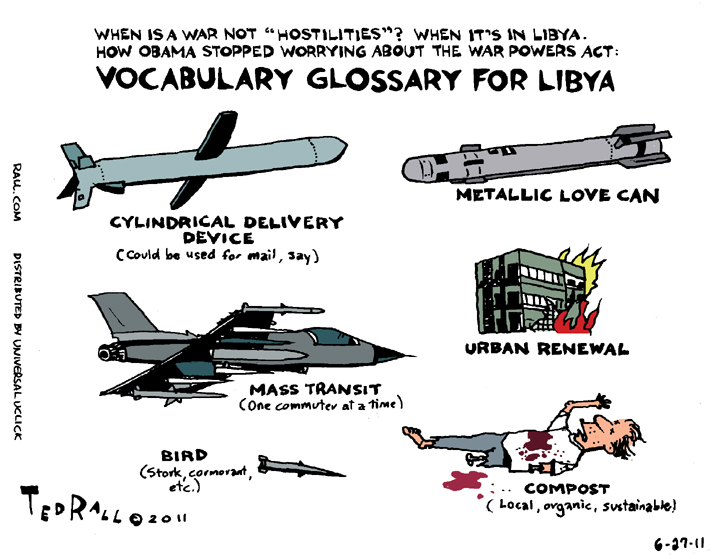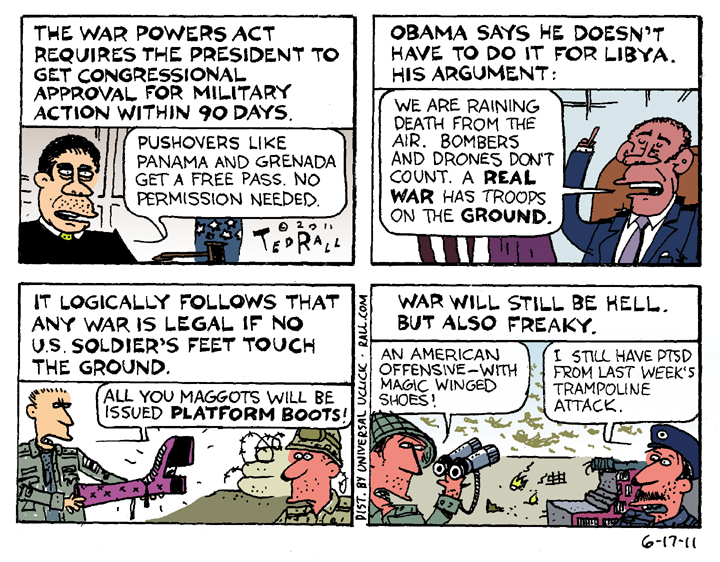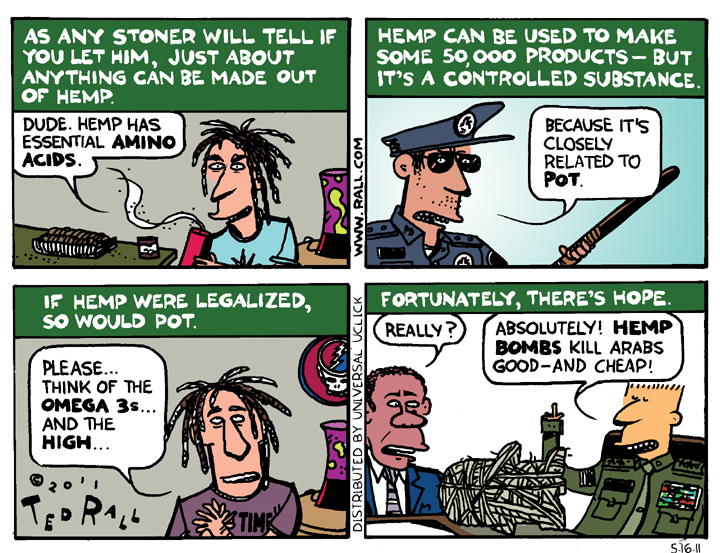Self-Delusion and the Cult of Militarism
Memorial Day: our national celebration of charred meat (but the four contractors hung from that bridge in Iraq don’t count).
Hope you enjoyed the weekend.
However, as we begin the countdown to next year’s Warapalooza—only 362 more days before you fire up the grill or, if someone near and dear died in one of our wars, spend the day at the graveyard grumbling about the fact that too few Americans share your sacrifices—I’d like what’s left of the Left to stop missing a golden opportunity to protest, mock and undermine the cult of militarism.
Let’s make Memorial Day 2013 a day to remember all the victims of American warmongering. By all means, shed a tear for the 58,282 American men and women who died for transnational natural gas corporations during the 1960s and 1970s, and a patently absurd “domino theory” in Vietnam. But make sure you cry 35 times more for the 2,000,000-plus Vietnamese men and women our soldiers were sent to kill—people who posed no threat to us, who did us no harm.
Let’s build a wall for America’s war victims in Washington. It’s the least we could do.
That sucker would be big. Huge. Big enough to stimulate the local construction economy.
Hang a flag and place a flower on the grave of one of the draftees too clueless or afraid to evade service, of a rube so ignorant of history and politics that he enlisted to fight in one of our countless optional wars of illegal aggression, of a bloodthirsty thug who seized the chance to commit murder for the state. They were our brothers and sisters and sons and daughters, and we loved them. We miss their unfinished lives.
Our war dead deserve recognition for helping to expand the American empire, and for lining the pockets of the profiteers and their pet politicians.
But worry not: the right-wingers will never let us forget these heroes.
Those of us who stand on the Left have a different duty. We stand for the oppressed, the downtrodden, the abused. We defend the innocent. We care about the underdog.
We on the Left reject the idea of The Other. To us, no life has more or less meaning or value than any other life. Our dead or not worth more than “their” dead. There is no us and them, there is only us.
Her death is not counted by the Obama Administration; still, we mourn the Yemeni woman blown to bits in a Predator drone strike on her home as much as the young man from North Carolina who goes up in an IED blast in Helmand province.
And so we, the Left, ought to declare that Memorial Day 2013 should belong not just to the jingoists and war criminals and patsies, but also to their victims. We should hang banners and march on behalf of the hundreds of thousands of Iraqis and Afghans murdered by U.S. forces since 2001. Call 1-800-Flowers; ask them to deliver a bouquet to a cemetery in Fallujah.
I’m not a pacifist. Some wars—a few wars—must be fought. Invading armies must be resisted.
But not most wars. War is almost always a struggle of the rich and powerful fought by the poor and powerless. War kills, maims, and makes people crazy. It destroys infrastructure. It sucks away resources—money, technology, people—that would be better deployed somewhere else.
Most Americans know this—or they think they do. On a gut level, however, we’re sheepish and embarrassed about the crimes committed in our name. We’re in denial.
It’s understandable. We’re not insane. We’re in a state of cognitive dissonance; we want to be one thing—peace-loving, good people—but we know we’re the opposite—passive, tolerant and fearful of “our government” (which not only can assassinate any one of us at any time, for any reason, but actually asserts the legal right to do so as consistent with the democratic values to which we supposedly adhere).
“Our” leaders feed us mass delusion. “You came home and sometimes were denigrated, when you should have been celebrated,” President Obama told a group of Vietnam vets on the occasion of the 50th anniversary of the start of the war. “It was a national shame, a disgrace that should have never happened.”
And it didn’t.
As historians have proven, no one ever spat on a soldier returning from Vietnam. To the contrary: the antiwar movement was pro-vet (in part because so many servicemen were conscripts). The spat-on-vet story began circulating after—of all things—Sylvester Stallone’s character in “Rambo 2” talked about it. Obama knows, or should know, the truth. He’s old enough to remember.
“You persevered though some of the most brutal conditions ever faced by Americans in war,” Obama went on. “The suffocating heat. The drenching monsoon rains. An enemy that could come out of nowhere and vanish just as quickly.” Why was the weather so tough, the enemy so fierce? Obama left that, along with much else, unsaid: we were invaders and occupiers, half a world away, propping up tyrants in a place where we had no business whatsoever.
And finally, an outrageous claim, one so widely accepted that the media didn’t bother to quote it in news accounts, much less question it: “We hate war. When we fight, we do so to protect ourselves because it’s necessary.”
What a kidder!
We Americans have fought a handful of battles, much less entire wars, to “protect ourselves.” From the Barbary States to Latin America and Cuba to Grenada and Panama and Pakistan and Somalia and Afghanistan and Iraq, the United States military has attacked without just cause, without legal justification, with impunity, 99 percent of the time.
It’s bad enough to live in a nation in thrall to the cult of militarism. It’s worse to lie about it. And it’s insane to believe the lies.
(Ted Rall’s next book is “The Book of Obama: How We Went From Hope and Change to the Age of Revolt,” out June 5. His website is tedrall.com.)
COPYRIGHT 2012 TED RALL

